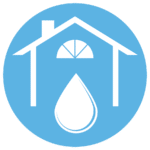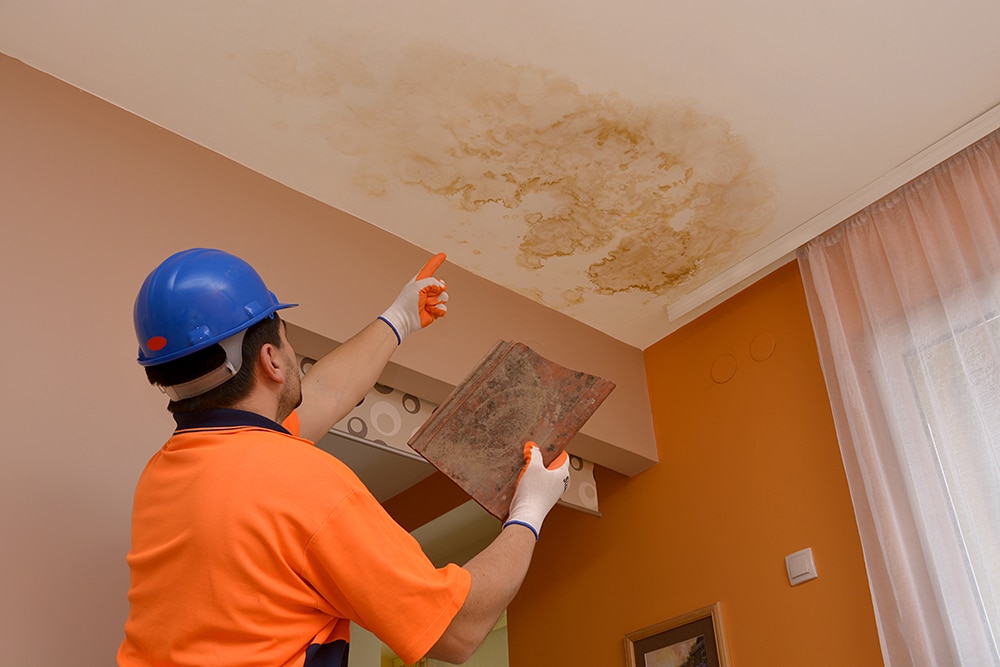
Water Damage Repair

Water Damage Causes
Water damage can occur for multiple reasons. Some of these reasons may be natural disasters while others may be due to your own doing. Often, water damage occurs because of structural issues within your home. Some of the most common causes of water damage are the following:
Bursting, or Leaking Pipes or Hoses
Bursting or leaking pipes is one of the most common reasons why people need water damage repair. Sometimes these pipe issues occur due to drains or clogged or backed-up toilets. This can cause pressure in the pipes, which then causes them to burst or leak.
Garbage disposal pipes can also break and cause water damage. This occurs when garbage disposals aren’t working properly. Pipes that are old and rusty are more prone to bursting or leaking.
Plumbing Issues
Oftentimes plumbing issues occur because the hoses and pipe joints aren’t fully attached. To minimize the amount of water damage repair that your plumbing could cause you to get, look over the pipes under your sinks periodically to see if anything doesn’t look right.
Condensation from Your Air Conditioner, Air Ventilating System, or Heater
Air conditioning, heating, and air ventilating systems are common causes of water damage. This is particularly true for air conditioners, as they can easily develop moisture buildup. Once this moisture cools, it can interact with mold spores that are already in the air conditioning ducts. This often causes mold to develop. Once that happens, water damage repair becomes necessary.
Leaking Roofs
Leaking roofs can develop for a number of reasons. One reason why roofs leak is that the seams of the overlapping sheets of the membrane that lay over the roof sometimes delaminate, thus causing leakage. Another reason why roofs leak is that heavy equipment near the roof, like HVAC units and exhaust fans, cause punctures and leaks within the roof itself.
Natural weather disasters causing damage to roofs can also cause roofs to leak. Because people do not always inspect, reseal, or maintain their roofs, their negligence can also cause roof leaking.
Foundation Cracks
Oftentimes, foundation cracks occur because of soil movement. Sometimes, these foundation cracks will then lead to foundation failure, which then can damage roofs to the point of leaking. Horizontal foundation cracks are the most likely to cause foundation failure.
Water Buildup in Crawl Spaces, Attics, and Basements
Crawl spaces are parts of the home that builders create underneath homes so that workers can put in pipes and electrical wires for the home. Oftentimes crawl spaces are dark and damp. This causes them to be perfect spaces for mold and water damage to develop in. When it comes to basements, moisture dripping through the concrete foundation of your home can cause leaks. Water damage can occur in attics as well due to the air that leaks between the attic and the roof causing the underside of the roof to develop mold and rot.
Broken Household Appliances
When household appliances age, their pipes and hoses get rusty and weak. This could cause the pipes and the hoses within these household appliances to burst or leak. Washing machines and hot water tanks are the household appliances that require repairing water damage the most.
Weather-Related Natural Disasters
Natural disasters such as hurricanes and tornadoes cause some of the worst known amounts of water damage within a home. Sadly, we cannot avoid or prevent natural disasters. All we can do is be prepared for when one does occur and contact someone that can repair the water damage within our homes immediately after a natural disaster is over.
Signs of Water Damage
As much as water damage can sneak up on you, there are some signs that tell you that water damage is likely occurring in your home. Whenever you notice one of the following signs, call a repair company to inspect that part of your home immediately.
Dark or Wet Spots
Whenever there is sudden discoloration or wetness on your ceilings or floors, this is often a telltale sign of water damage. The cause of this sign of water damage could be piping leakage or a saturated foundation. Beware though, because if water seeps through the subfloor and you have tile, that tile could loosen without having much wetness. This, in turn, will make it harder to detect the damage. When it comes to walls, water spots can occur on either their interior or exterior.
Cracking, Bubbling, or Flaking
If the drywall within your ceiling is cracking, bubbling, or flaking, it’s likely doing so because of water that has built up in, underneath, or near those areas. Sometimes, the water damage where a crack, bubble, or flake appears is so extensive that simply picking at that crack, bubble, or flake will release water. Thus, if you ever notice a crack, bubble, or flake on your ceiling, call a professional to get water damage repair immediately.
Puddles of Water
Continual pipe leakage can cause a puddle of water to form on your floor. Therefore, if you notice a puddle of water somewhere in your home that continues to appear even after cleaning it, there is likely a pipe near that puddle that needs water damage repair.
Sounds of Running Water
If there always seems to be sounds of water dripping or running in your home, you might have a leaky pipe. This is especially true if you turned off every faucet in your home. Oftentimes, the closest faucet to wherever that leaky pipe is will not turn off completely. This is a sure sign of needing water damage repair.
Your Utility Bill is Suddenly More Expensive
If your utility bill has suddenly increased by a large amount, you may have a leaky, burst, or broken pipe somewhere. This leaky, broken, or burst pipe is likely causing you to use more water than normal. As a result, your utility bill is more expensive.
Damp and Moldy Smell
Damp and moldy smells within your home is a sure sign of home water damage. Fortunately, damp and mold are easy smells to identify. Therefore, if you ever smell dampness or mold in your home, call a repair company to help you find the source of the water damage.
Some Consequences of Not Repairing Water Damage
It is easy to procrastinate getting your water damage repair done. As easy as it is, it is not wise. In fact, there are many consequences to not repairing water damage as soon as possible.
One of these consequences is that the wood structures of walls and floors become weak. Not repairing water damage in your home could also lead to wet flooring developing mold. Drywall can also develop mold when water damage repair does not occur.
Not repairing water damage can also corrode pipes. This could occur due to flood water breaking down those pipes. Water damage can easily reach electrical boxes and systems. When it does, these electrical boxes and systems become unsafe. Continual water damage can also break down concrete and brick.
Mold develops within 24-48 hours after water damage. Thus, you need to get water damage repair immediately after it occurs. Musty odors also develop soon after water damage. This is just another motivator to get water damage repair as soon as possible. If water damage does not get cleaned up soon after it develops, it could leave a permanent stain. This could decrease the entire value of your home.
Health Consequences of Not Repairing Water Damage
When water damage lingers for long periods of time, it can cause chemicals, toxins, and bacteria to develop. This could seriously harm your health. Bugs, fungus, and mold also tend to develop in moisture-filled places. All three of these things can spread diseases and worsen allergies, respiratory infections, and chronic headaches.
How Soon After Discovering Water Damage Should I Contact a Professional?
The longer you wait to get water damage repair, the worse your water damage will get. This, in turn, means that you will have to spend more money on repairing water damage. Therefore, it is important to seek out a water damage repair professional as soon as possible. This is especially necessary if you want to save or restore as many personal items from your home’s water damage as possible.
How to Protect Your Residential and Commercial Buildings From Water Damage
It is better to protect then to repair. When it comes to water damage, there are numerous things that you can do to protect your home.
The first thing you can do to protect your home in case it gets water damage is purchase homeowners and renters insurance. Homeowners and renters insurance covers the repair costs of burst pipes, wind-driven rain, and roof damage due to ice dams. You may even be able to get coverage for sewer and drain backups. You can get insurance coverage for home flooding from the National Flood Insurance Program (NFIP) and some private insurers.
Outside of insurance, maintaining your home is the best way to avoid water damage. For example, you could reseal your basement anytime you notice cracks or water seepage. To avoid having unnecessary water and moisture seeping into your home, keep your water drain away from the house.
To avoid sewage water damage issues, get a backwater valve so the sewage will always flow out of the house and not in. You can also inspect your plumbing and appliances regularly to ensure that there is no leakage.
Call Restore Remodel Renew For All Your Water Damage Repair Needs
Repairing water damage can be costly and time-consuming. This is especially true when you do not have a reliable restoration service company to help you. Thankfully, we provide our customers with premium residential and commercial emergency restoration services! So if you ever come across water damage in your home or commercial building, do not hesitate to contact Restore Remodel Renew!
What is water damage restoration?
Water damage restoration is a process that involves removing water from an affected area and restoring it to a dry and healthy living space.
What are the top benefits of water damage restoration?
- Water damage restoration services help to quickly dry impacted areas.
- Restoration helps to prevent mold growth and other issues that can occur.
- Preventing mold growth also prevents health problems that develop as a result of mold and standing water.
- Professional water restoration can help to cut costs that may come with the structural and overall damages caused by flooding and leaks.
How do I assess if the water damage is new or old?
Typically, a new water damage spot will be wet while the surface (wall, ceiling, floor, etc.) still remains sturdy and strong. An old water damage spot, on the other hand, will likely be mushy and the surface won’t be strong. This happens after the surface absorbs the excess moisture.
How do I repair a water-damaged ceiling?
First, the source of water must be stopped. Then, the area needs to be completely dried out. Next, you must remove the affected materials. Finally, repair the area with new materials, paint, and so forth.
How long does it take to dry out water damage?
On average, this can take about 5 days. But, the length of a dry out process depends on various factors, such as the amount of water present, the surface type, and whether the air in the selected space is dry or humid.
Can I take care of water damage by myself?
In minor cases, the restoration process might be easier to take care of on your own. However, for major water damage, it’s important to call in professionals!
